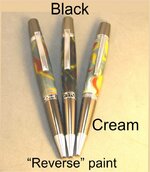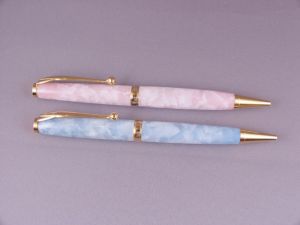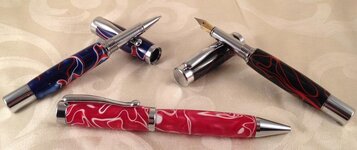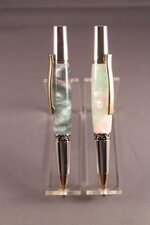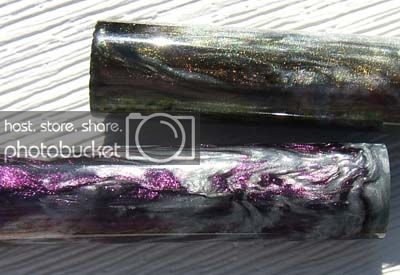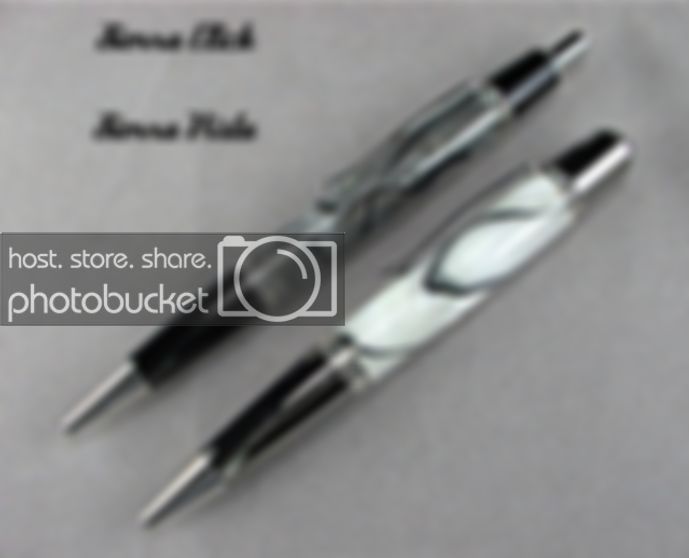ed4copies
Local Chapter Manager
Edit in 1/23/16 noon:
One of the advantages of a forum is the ability to find old conversations that were educational. An appropriate title makes this more easily accomplished. So, I am editing the title in an attempt to encourage the discussion of "depth" which has developed. Years from now, if someone wants to find it, this should make it easier.
We considered moving the "depth" comments to start another thread, as Dawn has several observations she would like to make, but we don't want to antagonize anyone by moving thier entries, so let's "casually divert" this thread to add the "depth" discussion.
Ed
In case you do not get our weekly email, here is a comparison of one pen blank (our Liquid Metal blank), with the drilled hole in the blank painted (reverse paint) a few different colors.
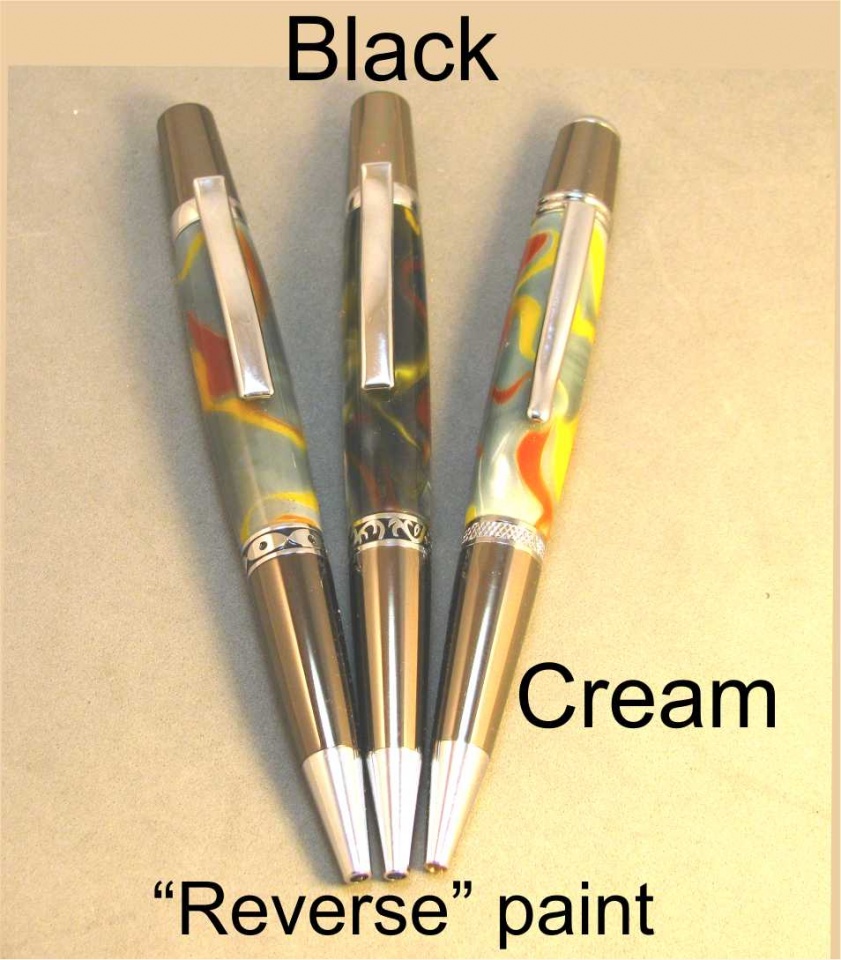
The pen on the far left is reverse painted grey. The picture is a little lighter than real life, cause monitors tend to darken the pic.
Happy to answer questions, if you wish,
Ed
One of the advantages of a forum is the ability to find old conversations that were educational. An appropriate title makes this more easily accomplished. So, I am editing the title in an attempt to encourage the discussion of "depth" which has developed. Years from now, if someone wants to find it, this should make it easier.
We considered moving the "depth" comments to start another thread, as Dawn has several observations she would like to make, but we don't want to antagonize anyone by moving thier entries, so let's "casually divert" this thread to add the "depth" discussion.
Ed
In case you do not get our weekly email, here is a comparison of one pen blank (our Liquid Metal blank), with the drilled hole in the blank painted (reverse paint) a few different colors.
The pen on the far left is reverse painted grey. The picture is a little lighter than real life, cause monitors tend to darken the pic.
Happy to answer questions, if you wish,
Ed
Attachments
Last edited:

